During my time at KCJS I chose to take semi-private shodō, or Japanese calligraphy, classes. My teacher, Tanaka-san, is a professional calligrapher and he guided me during this time. Some of the things I learned was how to position my arms, both the one holding the brush and the one not, how to control the amount of pressure I exerted, how to manipulate the brush to move how I wanted it to, how much ink I needed, and most importantly to never stop the flow of the brush as it glided across the paper. There is a lot more to the world of shodō than simply painting the characters, you must write with intention and meaning. The type of brush you use, the style of writing, and where you position the characters on the paper are also important in conveying not just the meaning but the feeling to the viewer. I recommend incoming students to put themselves in challenging situations–situations where they will encounter new things, or listen to Japanese above their level, or have to speak to strangers. Tanaka-san communicated with me in broken English and Japanese in order to teach me shodō because he wanted me to learn and no language barrier could change that. As long as you show that you are actively trying and putting effort, there will be people willing to help, and you in turn with grow.
「Hamilton College」カテゴリーアーカイブ
Julia Ramsay: Kyoto Echo Choir
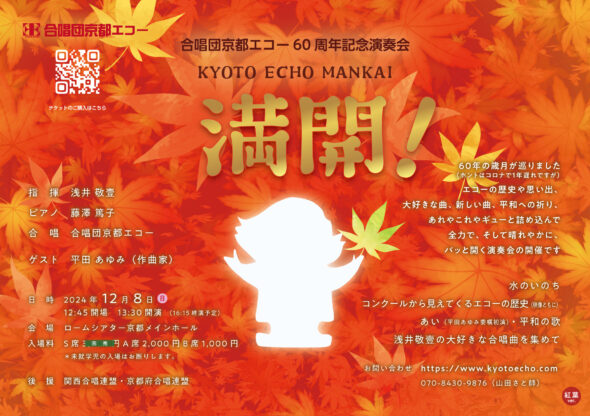
Introduction: Kyoto Echo Choir is a tight-knit, extremely welcoming community choir. They sing choir music in a variety of languages, including Japanese, English, and Latin.
Comments: I had an incredible experience singing with the Kyoto Echo Choir. Not only did I advance my musical ability by rehearsing with a talented group of singers, but my Japanese got better through chatting with the members and sight-reading music in Japanese.
Advice: Kyoto Echo Choir is a very welcoming group, so there are no worries about not fitting in. However, since they take members all year long, they move very quickly musically. If you are considering joining this choir, I would recommend being sure you are confident in your ability to pick up music quickly, since they will not teach it to you directly and in my experience you are not allowed to take the music home to practice.
Tyrone Xue: Shakuhachi
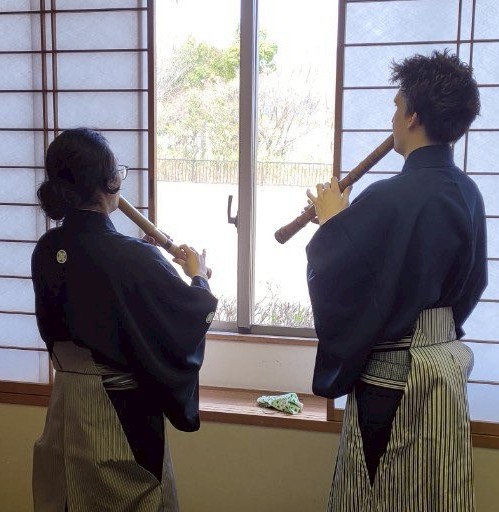
Me (left) and Sam (right) practicing right before our big concert
I took lessons learning the shakuhachi as my CIP. There are different types of shakuhachi playing style, I was learning the Kinko-ryu shakuhachi as it is what my teacher was an expert at. I feel that the shakuhachi is a fairly hard instrument to learn during the start compared to the other traditional instruments like the koto or shamisen, but eventually you get the hang of it. We were invited to play for a concert near the end of our lessons which I felt was an amazing experience, both the pressure and the fun.
If you’re thinking about doing a traditional Japanese instrument, whether it’s shakuhachi, koto, shamisen, or something else, I think you should just go for it. Even if you don’t have any experience in western music because the music sheet and playing method is really different anyways. My best advice is to not go into these lessons to become an expert in the instrument (our shakuhachi teacher himself has decades of experience but he still feels like he has more to learn). Instead, I think it’s best to go into it with the mindset of building human connections. The shakuhachi is one thing, but take some time to ask about the the history, the songs, and the communities. You’ll find yourself learning about a completely new world than just an instrument.
Alejandro Sosa Hernández: Calligraphy
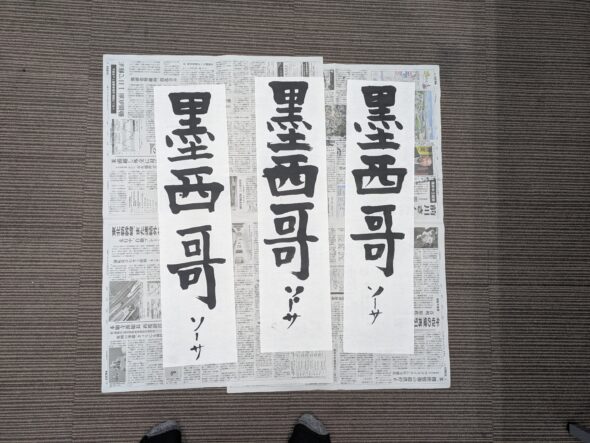
For my CIP, I took calligraphy lessons at the Shoukei Shoudo School. Once a week, the senseis would teach me how to write a new Kanji character until my skills developed enough for me to choose my own Kanjis. Learning how to do calligraphy was incredibly exciting and it was nice to have a dedicated creative outlet every week where I could practice my Japanese speaking and writing. It was perfect for me since I’ve always loved cursive writing, I think Kanji are beautiful, and I am quite the perfectionist. My advice to incoming students would be to not be afraid of asking for help! That’s what the senseis are there for.
Jayden Fedoroff: Volunteering at Bazaar Cafe
For my CIP, I volunteered at the Bazaar Cafe, which is right down the road from Doshisha University. The volunteer work consisted of primarily helping out in the kitchen. I would wash dishes, clean up the kitchen, and during down time, I would chat with the other volunteers and customers.
I thought that volunteering at the Bazaar Cafe was very fun! The volunteers and staff are incredibly friendly and the atmosphere was very laid back. Some of the days, the cafe was very busy, and during those times I had to wash a lot of dishes and there wasn’t as much time for chatting. However, when the cafe became less busy, I was often treated to a free lunch and I got to have some very nice conversations with the other volunteers.
I would highly recommend this CIP to students that really want to practice speaking casual Japanese (and Kansai-ben.) The volunteers are very laid back and kind, so they’re very easy to talk to. However, I would recommend also checking what the available times are for volunteering. I volunteered on Wednesdays from 12-2PM, which is when the cafe would occasionally become busy. If you would prefer a time that is less busy, I would recommend volunteering in the afternoons (around 2-4PM.) They are also very accommodating, so if you can’t come in during your usual time, if you let them know in advance, you can just come in the following week or reschedule for another time that week.
Santiago Chamorro: Volunteering at St. Maria’s Children’s Dining Room
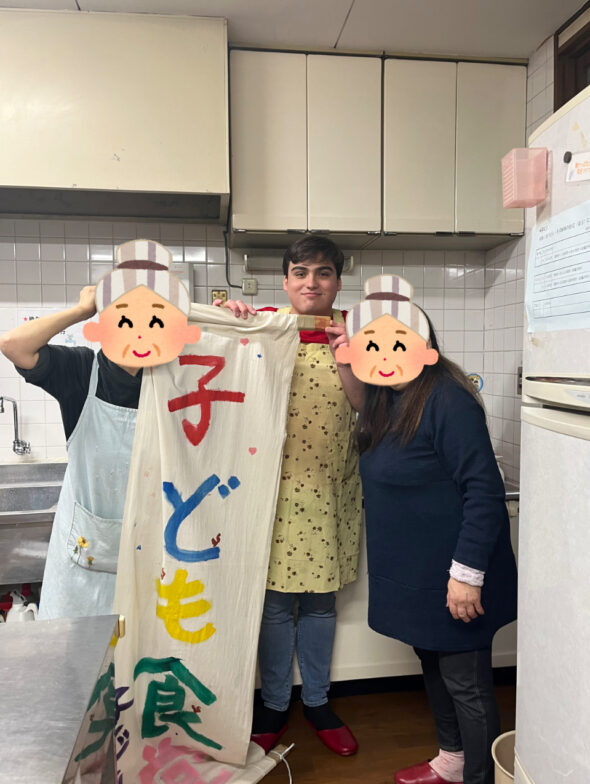
For my CIP, I volunteered at St. Maria’s Church to help its members set up and manage a dining room for children. This activity mostly consisted of helping prepare food, setting up tables, and interacting with the children that come to visit. This CIP is filled with kind and patient volunteers who helped me with my tasks, and allowed for me to practice Japanese through conversations we had while working. The children are also great. They are energetic and very nice, and although the speed at which they speak may be a challenge, they always cheered me up with every visit. Apart from preparing the food, you also get to share a meal with the volunteers and children, which gave me a great experience to enjoy some homemade Japanese food and to practice Japanese with the people I sat with. In this CIP I not only got to practice my speaking in a very active environment, but I also got a deeper understanding of this small sect of Japanese society. For anyone interested in this CIP, I recommend to be ready to interact with children and adults, and to communicate in a bit of a busy environment. It can be a little challenging at times, but it is very fun!
Meraly Morales – Volunteering at Bazaar Cafe
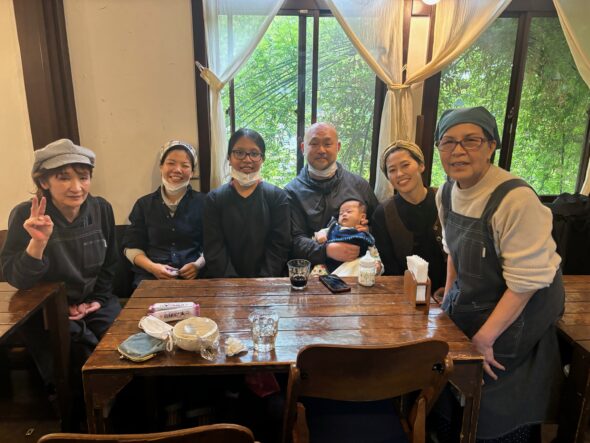 The Bazaar Cafe’s mission is to create and provide a safe space for people who are part of minority groups (sexuality, religion, age, nationality, etc.) by giving them a space to express and share their values. The people who work at the Bazaar cafe are often those who are unable to find employment in other places, due to various prejudicial reasons. Through volunteering at the Bazaar Cafe, I have met amazing people with different walks of life that have all been very accepting and interested in my individual ideas and values. By listening to their discussions about the cafe’s next steps (which include an effort to reduce the distance between college students and conversations about alcohol-related issues) at the beginning of the semester and then manually helping in the kitchen during the second half of the semester, I have been able to connect with a lot of the staff, and felt like I have contributed to the work done in the kitchen of this small but mighty cafe. Before beginning my CIP time at the Bazaar Cafe, I was warned to not be shy and instead be open to talking at the cafe. As someone who is nervous to speak in Japanese to Japanese people in fear of making mistakes, I also advise anyone who decides to volunteer at the Bazaar Cafe in the future to allow yourself to try and be open to expressing yourself. The cafe became a place where I could practice the language with locals without fear of judgment.
The Bazaar Cafe’s mission is to create and provide a safe space for people who are part of minority groups (sexuality, religion, age, nationality, etc.) by giving them a space to express and share their values. The people who work at the Bazaar cafe are often those who are unable to find employment in other places, due to various prejudicial reasons. Through volunteering at the Bazaar Cafe, I have met amazing people with different walks of life that have all been very accepting and interested in my individual ideas and values. By listening to their discussions about the cafe’s next steps (which include an effort to reduce the distance between college students and conversations about alcohol-related issues) at the beginning of the semester and then manually helping in the kitchen during the second half of the semester, I have been able to connect with a lot of the staff, and felt like I have contributed to the work done in the kitchen of this small but mighty cafe. Before beginning my CIP time at the Bazaar Cafe, I was warned to not be shy and instead be open to talking at the cafe. As someone who is nervous to speak in Japanese to Japanese people in fear of making mistakes, I also advise anyone who decides to volunteer at the Bazaar Cafe in the future to allow yourself to try and be open to expressing yourself. The cafe became a place where I could practice the language with locals without fear of judgment.
Veronica Seixas: Kyoto University Choir
Formy CIP,I went to Kyoto UniversityChoir’s rehearsals once a week on Wednesday from 6-8:30. It is an all gender/all voice part choir that learns Japanese, English, and Italian songs. Everyone in the choir was extremely nice and welcoming, assisting me whenever I needed help. I really enjoyed learning and singing songs in Japanese, and if the timing works out well you can sing in one of their concerts. If you have some experience with a choir and want to continue singing in Japan or try singing in Japanese, this is a great CIP that is easy to join.
Skyla Patterson: Fly Dance Studio
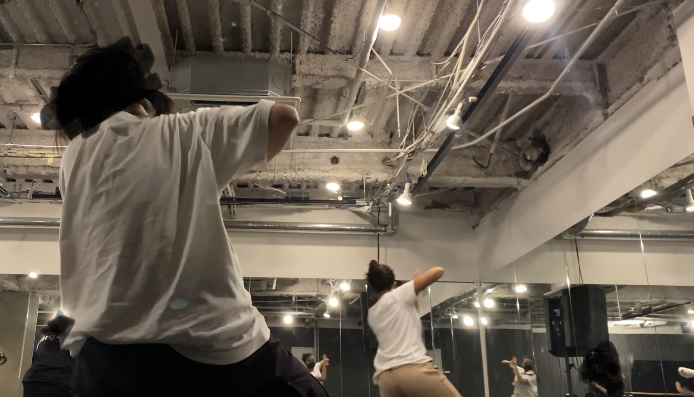
For my CIP I took dance classes at the Fly Dance Studio. It was a very immersive experience, and an amazing way to practice my Japanese skills whilst having fun. My advice to incoming students is to enter with an open mind, and take a bunch of different classes before committing to the same dance teacher every week. That way, you 100% know which class is the best vibes for you.
Jessica Frantzen: Kyudo
For my CIP, I learned kyudo, or Japanese archery, at the Kyoto City Budo Center Kyudojo under Furuya-sensei (entirely in Japanese!). I learned the process of kyudo all the way from entering the dojo properly and respectfully to firing with two arrows in hand, which was surprisingly complex and something I still make mistakes with from time to time.
In learning kyudo, I’ve had both times where I get frustrated with myself for making the same mistakes over and over and times where I’m proud of the progress I make. Moreover, I’ve learned a lot about the importance of respect for others (as seen in the proper bows and procedures we learn for entering and leaving the dojo, and even in the process of firing the bow) and self-improvement in this sport that I hope to take with me to other, future activities. In kyudo, what matters most is not winning, but slowly and surely improving on oneself without being in a hurry.
To anyone interested in practicing kyudo as a CIP, I would advise you to remember that kyudo is a complex sport, and you’re not going to be able to perfect all of the movements in one go. One place to start is learning the eight steps of kyudo before going in, so you can know what your teacher’s talking about when they mention them. If you can, coming in early and staying late will allow you to learn a bit faster, since you’ll get more practice in, and you’ll also get a chance to get to know your teacher better. But mostly, be sure to give yourself patience, ask your teacher often if you have questions on whether you’re doing something right, and enjoy being able to take time to slowly improve on yourself and learn such a traditional and complex sport!
